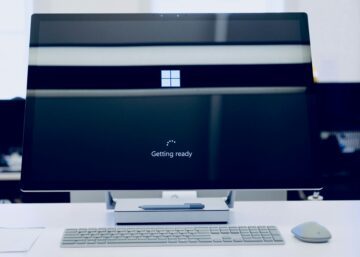The way the Google search results page looks is changing, and for builders, contractors, and remodelers, it is vital to the success of your digital marketing that you understand what is changing and how it impacts you.
The Anatomy of a SERP
What is a SERP?
SERP stands for Search Engine Results Page. It’s what you see when you put a search query into your search engine of choice. Search engines include Google, Bing, Yahoo, DuckDuckGo, Ecosia, and more. (Although the two biggest players to keep your eye on right now are Google and Bing – and yes, you should care about Bing.)
Sections of a Google SERP
There are typically four pieces or sections to any SERP (although depending on the search query, sometimes Google will only show you two or three of these sections):
- Organic Search Results – These are the search results that take up the most space, typically. They are not paid for, but are results based on how well a specific page on a website ranks for the query entered into the search engine. (Reminder: Pages rank, not websites.) How well a page ranks depends on a number of factors – literally thousands, and Google doesn’t share exactly what those are. But if you want to learn more about how to rank well for specific queries, check out this blog post.

Organic results will also have sections like “People also ask” or “People also search for” that will either pull in snippets of content from a webpage to answer a relevant question, or will update the search query to a related keyword or phrase.

- The Map Pack (a.k.a. Local Pack) – Whichever name you call it, the pack pulls information from Google Maps and Google Business listings that are relevant to the search query. Depending on the query, this may or may not show up, but you can pretty much guarantee that if someone is looking for a local service provider, like a home remodeler or a general contractor, the map pack will be on the SERP. Learn more about local search results here.
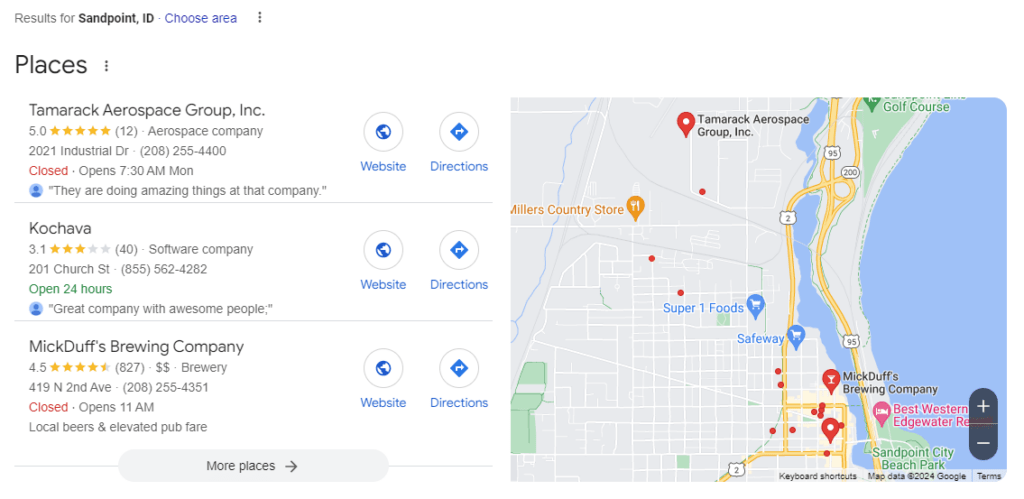
If a search query is for a specific company, a Google Business Profile will show up along the side of the SERP. If it’s for a specific person, something called a Google Knowledge Panel will show up (more on that here) but unless you are an extremely well known contractor (a la Chip Gaines) you don’t need to worry about that. Here’s Keokee’s Google Business Profile:
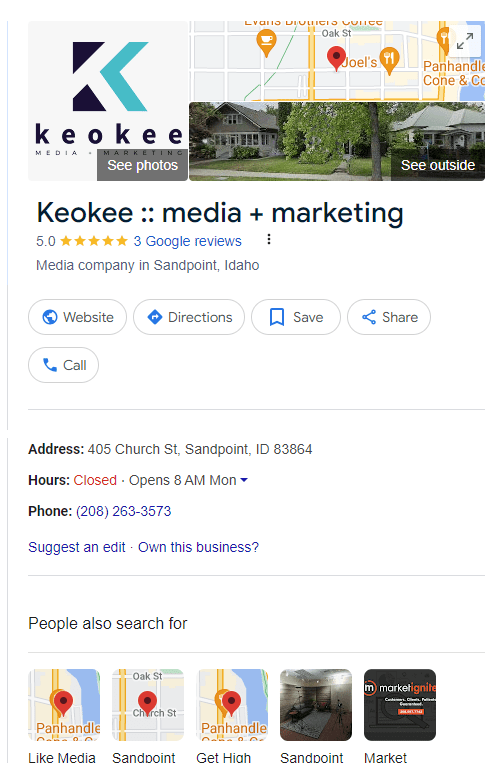
- Paid Search Results – These are ads paid for through the Google Ads platform that are specifically set up as search ads. They look almost identical to organic results, except they will have a small tag near them that says “ad” or “sponsored” to differentiate. You can learn more about paid search in this blog post and learn more about ad budgets here.
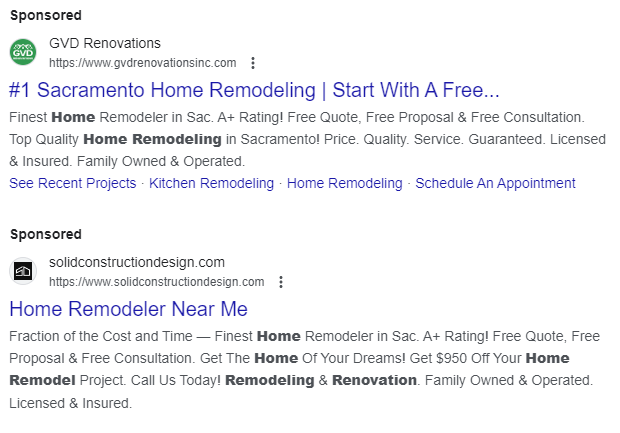
- Local Services Ads – The newest feature of a Google SERP, these are ads that are set up through your Google Business Profile after completing the Google Guarantee verification process. They sort of look like a hybrid of the map pack listings and the paid search results. And they are what the rest of this blog post is all about because they are changing the way a Google SERP looks for any business in the home improvement industry.
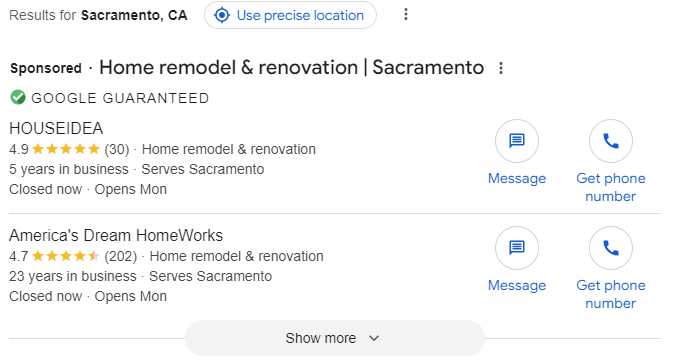
The SERP Order Changes
Historically, up until the last month or so, a Google SERP would be set up in the following order:
- Paid Search Results
- Map Pack (if relevant)
- Organic Search Results
- More Paid Search Results
But now, for queries like “home remodelers near me” the SERP is looking a little different:
- Local Service Ads
- Map Pack
- Organic Search Results
- Paid Search Results
Although sometimes Paid Search will also show up after the Map Pack but before Organic. It varies, and it seems like Google is still playing around with the best order for both the person doing the search, and what will make Google the most advertising money.
Find out where you are ranking on the SERP with our free SERP analysis!
Why Should Contractors Care About Local Service Ads?
THIS IS HUGE. Local Service Ads (LSAs for short) have pushed Paid Search out of the number one spot on a SERP. Which means if paid advertising is an important part of your digital marketing plan, it is vital for you to complete the Google Guarantee verification process now so that you can start running LSAs as soon as possible.
The Google Guarantee process can take a bit to complete – it’s very comprehensive and does include some background checks.
How to Get Google Guaranteed
First, sign in to your Google Account for your business. Use the email address you would use to sign into your Google Business profile.
Next, go to the Google Local Services Ads Home Page and select the “Get Started” button.
Check eligibility for “General Contracting” using the same zip code as your office address in your Google Business Profile to begin the process. Using the “General Contracting” category will allow you to choose specified services later on like the examples below:
- General Contractor
- Accessory Buildings
- Bathroom Remodeling
- Decks and Patios
- Exterior Finishing
- Foundations and Concrete
- Commercial Projects
- Home Additions
- Home Building
- Home Remodel and Renovation
- Interior Finishing
- Kitchen Remodel
- Roofing
Now, start the Sign-Up Process, enter Business Information, and create your account. There is a “Signup Tutorial Video” at the bottom of the page if you need any help.
The verification process will require proof of insurance, background checks for any company owners and client-facing employees, a budget selection, your billing information, and at least three reviews on your Google Business Profile. You can learn more about the screening and verification process requirements in the Google Help Center.
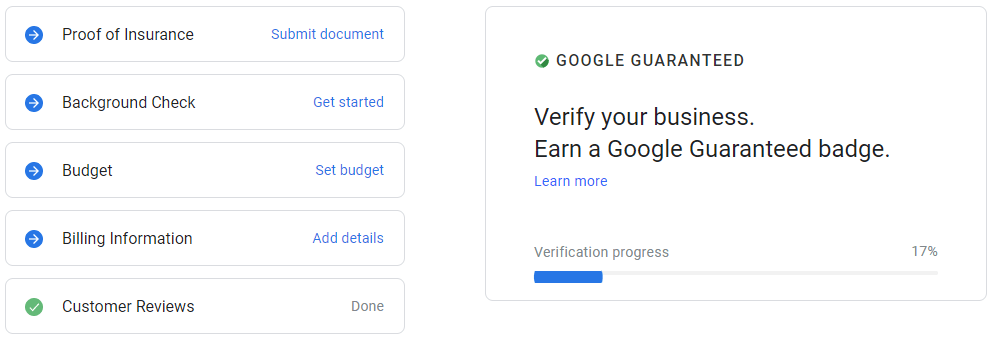
How Do Local Service Ads Work?
Once you’ve completed the Google Guarantee process and gotten that nice green badge next to your Business Profile listing, you are now able to run LSAs.
LSAs run off an auction system, the same way Paid Search Ads do, but they focus this auction on different factors than Paid Search. LSAs rank business profiles based on several criteria to make sure the end user searching for a service provider is getting the most relevant results. In addition to the Google Guarantee badge, your ability to show up for a search is based on the quality and relevance of your Google Business Profile.
Factors such as the business’s reviews, its responsiveness to customer inquiries, and the completeness of its profile information play crucial roles. Google also takes into account the proximity of the business to the user’s location and the specific nature of the service being searched for. Ultimately, businesses that maintain high-quality profiles, offer excellent customer service, and earn positive reviews are more likely to achieve higher rankings in Local Service Ads.
How Much Do Local Service Ads Cost?
Just like Paid Search Ads, the cost of LSAs is going to vary based on the service, the geographic location, and the number of competitors in the auction. (And sometimes Google’s whims, if they want to increase their ads revenue, but I digress.) But unlike Paid Search, you are not forced into a Cost-Per-Click model where you pay anytime anyone clicks on your ad, regardless of whether or not it turned into a potential lead.
With LSAs, you pay per lead. You read that right – YOU PAY PER LEAD. Amazing, isn’t it? Google has finally figured out how to compete with Yelp and Angi, and it’s only taken them a decade or two. Plus, you can file a dispute if the lead was spam and Google may credit you back for that lead cost (learn more about leads here).
The best way to find out how much leads are going to cost in your area is to go to the LSA Home Page and enter your information. Give them your zip code, the number of leads you want to try to get per month, and select the “General Contractor” category. Google will then spit back out an estimated cost per month for the number of leads you want to get.
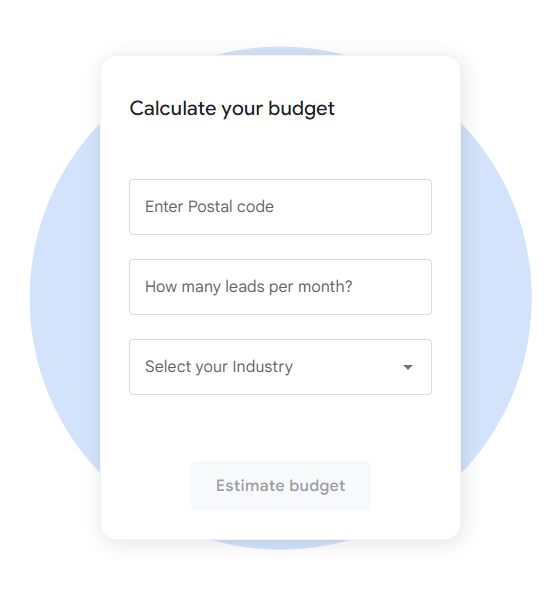
And the costs (as of now) are waaay lower than anything we’ve seen on Paid Search. For example, as of mid-August, the LSA cost calculator is reporting that a general contractor looking for 15 leads each month in Sacramento’s most affluent zip code – 95837 – would need an estimated budget of $540 to $810 per month to get those 15 leads. A well-set up Paid Search campaign typically needs a minimum budget of $2,000 per month, and usually yields 1 to 5 monthly leads, depending on keyword costs in the geographic area.
Need Help Setting Up Local Service Ads?
If you’re liking what you’re reading about LSAs for builders, general contractors, & home remodelers, and you want expert help in running LSAs, reach out to our Keokee Contractor Marketing Team today by filling out the contact form here, or emailing our team at [email protected]. We’d love to talk with you about your digital marketing plan and how LSAs can help you.


